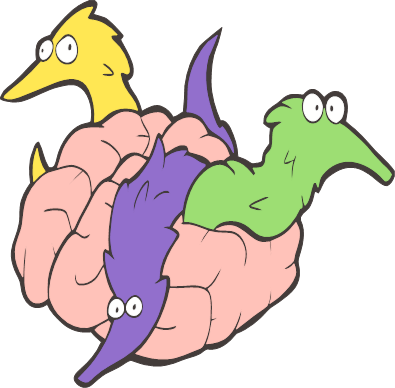Great, we all get to play Baldur's Gate 3 irl.
Biodiversity
Welcome to c/Biodiversity @ Mander.xyz!
A community about the variety of life on Earth at all levels; including plants, animals, bacteria, and fungi.

Notice Board
This is a work in progress, please don't mind the mess.
2023-06-16: We invite our users to contribute resources for the sidebar.
2023-06-15: Looking for mods!
About
Biodiversity is a term used to describe the enormous variety of life on Earth. It can be used more specifically to refer to all of the species in one region or ecosystem. Biodiversity refers to every living thing, including plants, bacteria, animals, and humans. Scientists have estimated that there are around 8.7 million species of plants and animals in existence. However, only around 1.2 million species have been identified and described so far, most of which are insects. This means that millions of other organisms remain a complete mystery.
Over generations, all of the species that are currently alive today have evolved unique traits that make them distinct from other species. These differences are what scientists use to tell one species from another. Organisms that have evolved to be so different from one another that they can no longer reproduce with each other are considered different species. All organisms that can reproduce with each other fall into one species. Read more...
Rules
- Don't throw mud. Be kind and remember the human.
- Keep it rooted (on topic).
- No spam.
Quick Links
Resources
- The Convention on Biological Diversity (UN)
- The Biodiversity Heritage Library
- Maps of the World's Biodiversity
- Ecosystems and Human Well-Being (free e-book)
- Falling Fruit: Map of the Urban Harvest
Bypass Paywalls
- On Ethics 1 2 3 4
- WaybackMachine (archive.org)
- Behind the Overlay Browser Extension
- ladder
- Anna's Archive
- Bypass Paywalls Browser Extension (see readme for Chrome & mobile options.)
Similar Communities
Sister Communities
Science and Research
Biology and Life Sciences
Plants & Gardening
Physical Sciences
Humanities and Social Sciences
Memes
Find us on Reddit!
Gross, gross, gross, gross, gross.
When a rat lungworm finds itself in a human, it does what it usually does in rats—it heads to the central nervous system and brain. Sometimes the migration of the worms to the central nervous system is asymptomatic or only causes mild transient symptoms. But, sometimes, they cause severe neurological dysfunction. This can start with nonspecific symptoms like headache, light sensitivity, and insomnia and develop into neck stiffness and pain, tingling or burning of the skin, double vision, bowel or bladder difficulties, and seizures. In severe cases, it can cause nerve damage, paralysis, coma, and even death.
Advertisement
It's often thought that the worm can't complete its life cycle in humans and that it ends up idly wandering around the brain for a month or two before it's eventually killed off by immune responses. However, there has been some evidence of adult worms reaching the human lungs.
Even on Lemmy I have to deal with 'advertisement'. /S
Average IQ rises
"writhing in human brains" is my least favourite sentence today.

oh god oh fuck it's happening
Anybody else hear the sound effect?
I mean that explains a lot
This is the best summary I could come up with:
The infected animals were spread throughout the study's time frame, all in different months, with one in 2019, three in 2021, and three in 2022, indicating sustained transmission.
The finding is concerning given the calamitous infection the rat lungworm, aka Angiostrongylus cantonensis, can cause in humans.
This can happen if the gastropods eat the rat poop or if the ravenous larvae just bore into their soft bodies.
Infected snails and slugs can also be eaten by other animals first, like frogs, prawns, shrimp, or freshwater crabs.
When a rat lungworm finds itself in a human, it does what it usually does in rats—it heads to the central nervous system and brain.
This can start with nonspecific symptoms like headache, light sensitivity, and insomnia and develop into neck stiffness and pain, tingling or burning of the skin, double vision, bowel or bladder difficulties, and seizures.
The original article contains 497 words, the summary contains 144 words. Saved 71%. I'm a bot and I'm open source!
Good Bot
Day after day I receive confirmation that never eating leafy veggies is the right choice after all.
That explains a lot.
I'm all good, thanks.
Cool, they made our emoji real! 
Thus is the article I didn't need for my Friday night...
Brain slugs huh?
It wasn't already there?
Source: From Texas, the best of the "Southern" states (especially better than the southeast 🤮